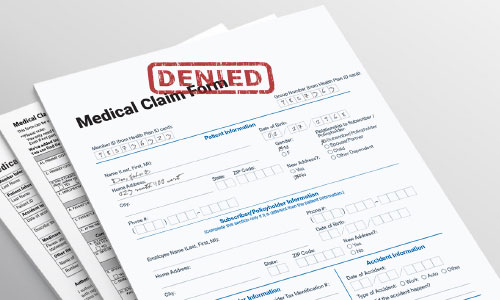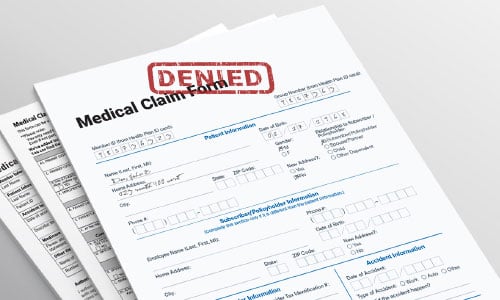Rejected medical claims have a chilling effect on both the medical provider and the patient. Your medical facility is not able to function as it should when claims are not paid in a timely manner. Patients may not be able to pay their bills and, as a result, might not seek the additional treatment that they need.

Many of these claims are rejected because of preventable mistakes. The following are some common issues and ways to prevent or fix them.
Incorrect Personal Information
Sometimes the problem is as simple as a misspelled name or incorrect date of birth. When this information does not match what's on your claim, the insurance company will reject it. Simply having your staff confirm this information with the patient at the time of the appointment can reduce medical claim denials.
Pre-Authorization
Medical personnel know that many procedures and hospitalizations require pre-authorization from the insurance company. Patients are not so knowledgeable and frequently do not get a pre-auth before their medical visit. You need to train your staff to recognize when a pre-auth is probably necessary and have them encourage patients to call their insurance company to get one. In fact, patients should contact their insurance company before most procedures just to be safe. A short phone call can prevent them from doling out thousands for an unapproved procedure.
Non-Covered Services
Private insurance policies vary in the coverage they provide. Patients are not always aware of what services are covered under their policy, particularly if they have recently changed insurance companies. Your staff should conduct eligibility checks several days before appointments to make certain that the planned services are covered. If they are not, you can inform the patient so they will know what their financial responsibility will be. For instance, some policies do not cover any out-of-network services.
Coding Errors
Medical coding is complex, and errors can easily occur. Sometimes a preventative service such as a mammogram is accidentally coded as a diagnostic service. Instead of the insurance company covering it completely, the cost of the service may be mistakenly applied to the patient's deductible. An incorrect code can also cause a claim to be completely denied because it may be for a procedure not covered by the patient's policy. You can eliminate many of these mistakes by creating your own code scrubbing crew to review all claims before they are submitted to the insurance company.
Filing Deadlines
Avoiding timely filing denials can be difficult since insurance companies have different deadlines. You may have six months to file or only 90 days. Medical facilities can easily become swamped by paperwork, leading to missed claim filing deadlines. As a result, you may have to write off the patient bill and absorb the cost yourself. To avoid this issue, train your staff on your payor contracts and then invest in a quality automated billing program that will make it difficult to miss these all-important deadlines. Your facility will quickly see financial improvement.
Patient Knowledge
Unfortunately, patients are often uninformed about their own insurance coverage. They may come into the office with an expired card, not realizing that their coverage has been canceled. Or they may not recognize that you are out of their network. As a result, the patient may be both embarrassed and frustrated and cancel the appointment. If this happens, the patient suffers, and your daily schedule is disrupted. Have your staff call the patient before the appointment to confirm their insurance coverage. That way, problems can be handled before the patient is waiting in the office.
In reality, most medical claims are quickly and accurately processed, but even a few denied claims can harm your office's cash flow and cost you the goodwill of your patients. Your staff should be proactive about gathering information and contacting insurance companies. When they are, many claim problems are eliminated.



